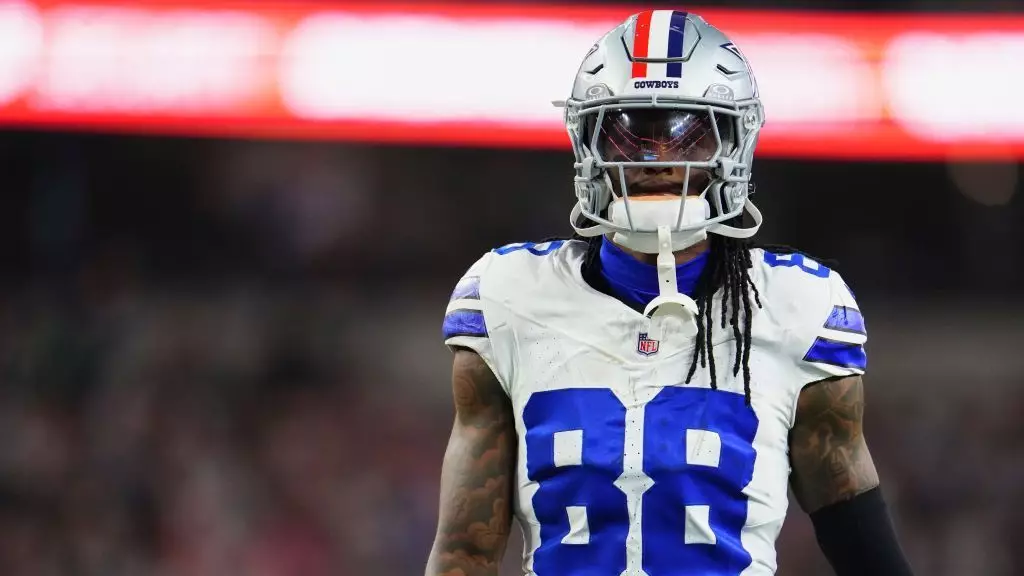The Dallas Cowboys have always been a focal point in the NFL landscape, but their performance at AT&T Stadium against the Philadelphia Eagles brought new attention to both their play and a unique environmental factor—the sun. In what turned out to be a lopsided defeat with a final score of 34-6, a second-quarter misplay brought to light a persistent issue that goes beyond just the game: visibility and its potential impact on performance.
The Cowboys entered the game looking to gain momentum after a shaky start to the season, but they faced immediate adversity when they found themselves trailing 7-3. The pivotal moment came on a second-and-goal situation at the Eagles’ three-yard line, where quarterback Cooper Rush had the opportunity to connect with wide receiver CeeDee Lamb for what could have been a crucial touchdown. However, according to reports, sunlight played a complicating role, rendering Lamb unable to track the ball due to glare. This miscommunication and unfortunate timing led to the Cowboys settling for only a field goal, which foreshadowed a challenging second half where the team would fail to find the end zone again.
Such missed opportunities seem to encapsulate the broader struggles of the Cowboys, who have not only been hindered by their performance but also by the external factors that shouldn’t need to influence the game. In the grand scheme of things, a six-point difference may appear trivial, but in a sport where momentum is central, this moment was emblematic of the Cowboys’ ongoing battle against adversity.
Post-game interviews with team owner Jerry Jones highlighted the perplexing nature of the Cowboys’ response to these challenges. Rather than acknowledging the necessity for practical solutions—like installing curtains that have already been used for other events at the stadium—Jones repeatedly deflected criticism about the sun’s impact. “We do know where the damn sun’s going to be at our own stadium,” he asserted, referencing a seemingly simplistic comprehension of the problem when the issue requires more nuanced thought. His rhetorical questions, such as suggesting the construction of a new stadium or mocking the notion of curtains, detracted from engaging with solutions that could alleviate the visibility issue.
Moreover, Jones’ comments revealed a disconnect between the team’s operations and the realities that players face during games. Players are directly impacted by environmental conditions, while management appears to sidestep more practical solutions to resolve these visible hurdles.
The Players’ Perspective: CeeDee Lamb Weighs In
Despite management’s dismissive attitude, CeeDee Lamb’s candid remarks can be viewed as a refreshing perspective from within the locker room. Manning the role of a franchise wide receiver, Lamb expressed unequivocal support for the idea of curtains to mitigate the blinding sunlight problem. “Yes, 1,000 percent,” he stated when asked if he would advocate for such measures, underscoring the very real physical challenges players encounter on the field.
His willingness to speak out on the issue emphasizes the need for open communication and consideration between players and management. It’s clear that a player’s ability to perform relies not just on their skill, but also on an accommodating physical environment, an aspect that should not be underestimated.
The Dallas Cowboys’ recent defeat at AT&T Stadium serves as a multifaceted cautionary tale that highlights more than offensive inefficiency. It reflects a wider issue regarding the interplay between player performance and environmental conditions, particularly the impact of the sun.
The conversations stemming from Jerry Jones’ comments and Lamb’s input illustrate the gap that can exist between the front office’s decisions and the players’ realities on the field. In the long term, if the Cowboys wish to capitalize on their storied franchise, addressing practical environmental adaptations such as curtain installations could pave the way for reducing these disruptive influences. As they navigate the rest of the season, the Cowboys must also look inwardly, recognizing that both performance and environment can be integral to their success.

Leave a Reply